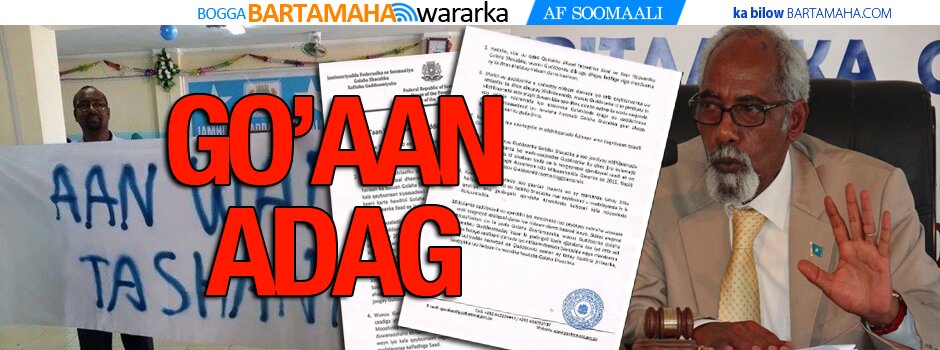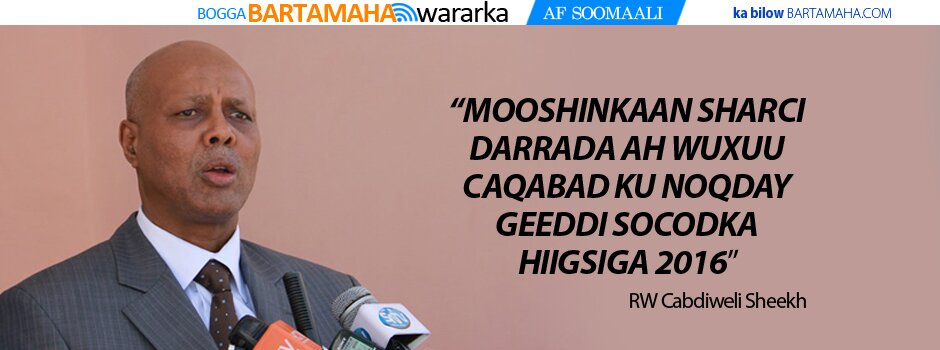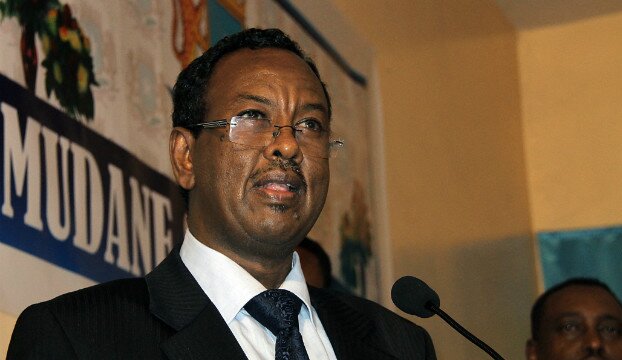SCENARIOS Somali government faces biggest battle yet
By Andrew Cawthorne
![]() NAIROBI, May 13 (Reuters) – Somalia’s fledgling government is facing its biggest test to date with battles against Islamist militants in Mogadishu killing scores and sending thousands fleeing the war-scarred capital. [ID:nLC789496
NAIROBI, May 13 (Reuters) – Somalia’s fledgling government is facing its biggest test to date with battles against Islamist militants in Mogadishu killing scores and sending thousands fleeing the war-scarred capital. [ID:nLC789496
Here are possible scenarios for the Horn of Africa nation:
GOVERNMENT DEFEATS SHABAAB?
* In power since January, the government of President Sheikh Sharif Ahmed [ID:nLV26136] is seen by many foreign diplomats as the best chance for peace in Somalia for 18 years.
* For that to happen, however, the government needs to eliminate the threat of the militant rebel group al Shabaab, which means ‘Youth’ in Arabic and is said by Western security services to be al Qaeda’s proxy in Somalia.
* The government is still building its own security services, which it hopes to be 20,000-strong eventually, and experts say at the moment they are probably not strong enough to break Shabaab’s grip on parts of Mogadishu. International donors have pledged more than $200 million to beef up the security forces and fight piracy. Somalia is anxious to receive the funds, but diplomats are keen to see mechanisms set up to ensure accountability.
* African Union (AU) peacekeepers are in the capital to bolster the government, but do not have a mandate to pursue the rebels. The moderate Islamist movement Ahla Sunna is combating Shabaab in provincial areas.
* On withdrawing from Somalia at the start of the year, Ethiopia said it would intervene again if “terrorists” took power and threatened its security. There is no sign yet, however, of a return of Ethiopian troops, though Addis Ababa is said to be funnelling supplies to anti-Shabaab militia.
SHABAAB TOPPLES GOVERNMENT?
* Estimates of the number of Shabaab fighters vary, but may be around 10,000, experts say. The movement is swelled by some foreign fighters, who have come to Somalia to fight ‘jihad’ or ‘holy war’ in a conflict some have dubbed “Africa’s Iraq”.
* Although President Ahmed is an Islamist, used to head the old Islamic Courts Union whose security wing was Shabaab, and has promised to introduce sharia law in Somalia, that is not enough for the militants. They say he has sold out to the capitalist, Christian West by forming a government in a U.N.-sponsored peace process, and by accepting aid.
* Shabaab wants to topple Ahmed, introduce a hardline version of sharia law nationwide, and chuck out AU peacekeepers. Experts believe it has enough strength to do daily damage to the government, but probably not to force it out altogether.
PROTRACTED FIGHTING?
* The world’s eyes tend to glaze over at news of yet more death and destruction in Somalia, but such protracted fighting, without a definitive outcome, is probably going to continue in the short- and medium-term.
* In that scenario, Shabaab will continue guerrilla-style hits against the government and the AU mission AMISOM, and engage in bigger battles — like this week — when Ahmed’s administration steps up its response.
* Ahla Sunna will continue to fight Shabaab in southern provinces, with towns and territory going backwards and forwards between the two, analysts say.
* Mindful of the disastrous U.S.-U.N. intervention in the early 1990s, which collapsed after the “Black Hawk Down” killing of 18 American soldiers, the world is unlikely to intervene beyond trying to beef up the 4,300-strong AU force and fund the Somali government’s attempt to build an army. Neither the U.N. Security Council nor U.S. President Barack Obama have much political appetite for another major push of their own on land.
RECONCILIATION?
* President Ahmed has said he wants to talk to Shabaab and has sent emissaries, but the rebels have so far rejected his overtures and responded in insulting terms.
* A key figure in any potential reconciliation will be hardline opposition leader Sheikh Hassan Dahir Aweys, who has just returned to Somalia and carries sway with many of the rebels. He has so far declined to talk with the president.
* There are splits in the rebels, with some leaning towards dialogue, especially now their main previous justification for war — the presence of Ethiopian troops — has gone.
MORE SUFFERING, PIRACY:
* Somalia’s 9 million people continue to pay a heavy price for the chaos and violence in their nation.
* Drought is exacerbating the situation for an estimated 3.2 million in urgent need of food aid. [ID:nLC73883]
* More than 1 million people live as internal refugees.
* Hundreds of thousands have poured across the borders into neighbours Kenya, Ethiopia and Djibouti. Others have fled by boat to Yemen, hundreds drowning en route every year, sometimes tipped overboard by unscrupulous smugglers.
* Piracy remains rampant off Somalia, with nearly 30 hijackings so far this year, meaning 2009 is on track to be even worse than 2008 when 42 seizures made it the worst ever. (Editing by Daniel Wallis)
Comments
comments
 Calendar
Calendar





































